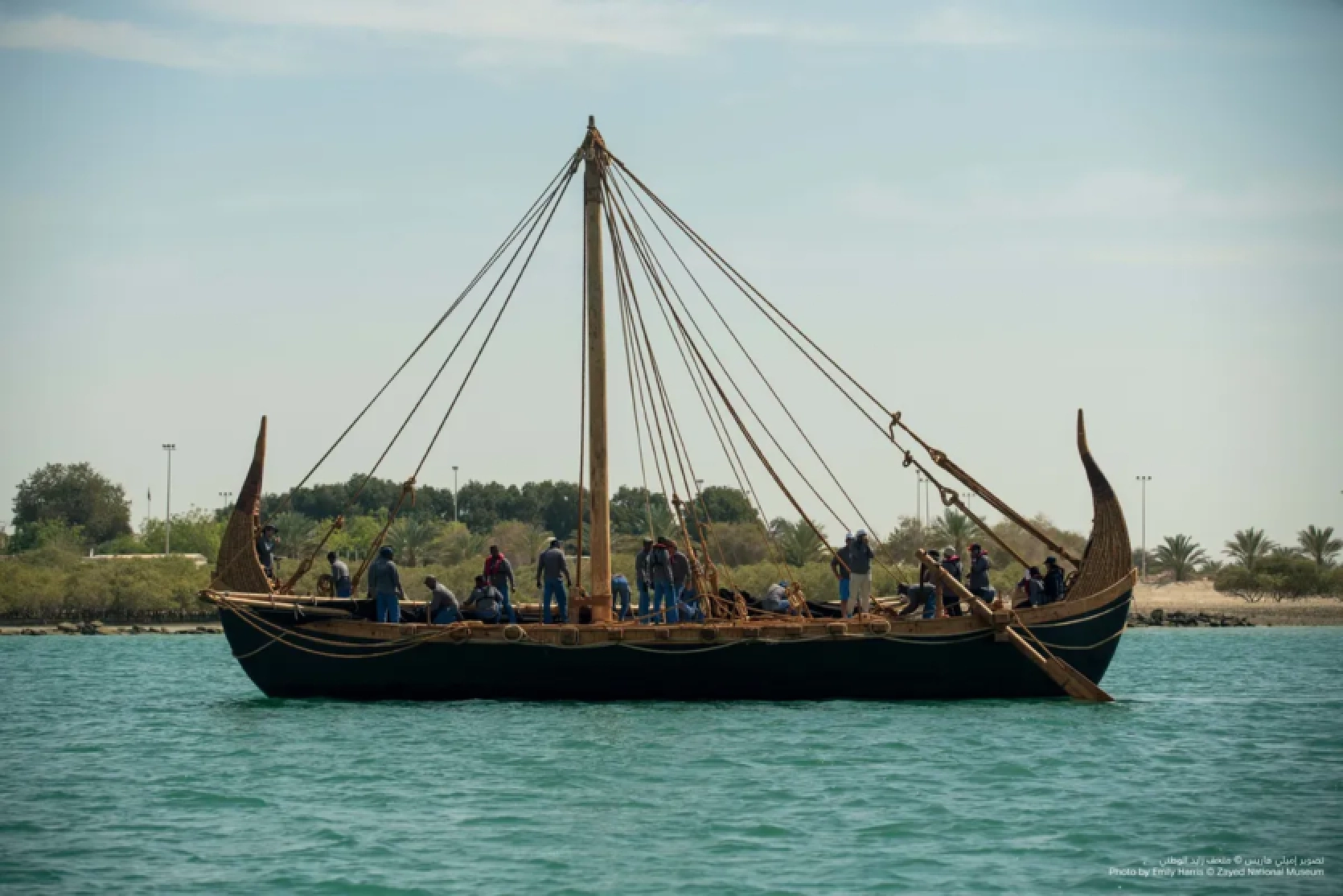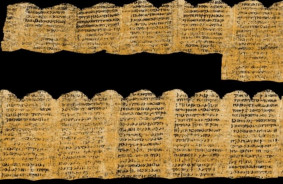Among the materials used are reeds and goat wool.
Researchers from New York University in Abu Dhabi and Zayed University have recreated an ancient vessel known as the Magan boat. The name derives from the Magan civilization, which once covered territories of present-day Oman and the United Arab Emirates. These boats were used for trade with Mesopotamia and South Asia.
The team constructed an 18-meter-long boat using techniques described on a clay tablet from 2100 BC. The outer hull was made from 15 tons of local reeds, bound in bundles with ropes made from palm fibers. The reeds were attached to a wooden frame composed of four different types of wood and covered with bitumen for waterproofing. Additionally, animal hides, goat wool for the sail, and fish oil were used as further water-resistant measures.
The construction was carried out manually using traditional tools such as chisels, adzes, and wooden hammers. The vessel has a carrying capacity of up to 36 tons.
Robert Parthesius, the head of the heritage and museum studies program at New York University in Abu Dhabi, explained:
“We relied on various sources for the design and construction of the boat, including remnants of bitumen from ancient ships, textual sources, boat models, and marine iconography.”
During trials in the Persian Gulf, Emirati sailors operated the boat. It traversed 50 nautical miles (92.6 km), reaching a speed of 5.6 knots (10.4 km/h). Raising the sail required a crew of more than 20 people, as modern rigging systems were not available during the Bronze Age.
“Although we did not test the vessel in strong winds, it was able to reach speeds of over five knots with winds under 15 knots, which exceeded our initial predictions,” noted Parthesius. “Overall, maneuvering the boat was easier than we expected.”
Source: Iflscience














Comments (0)
There are no comments for now